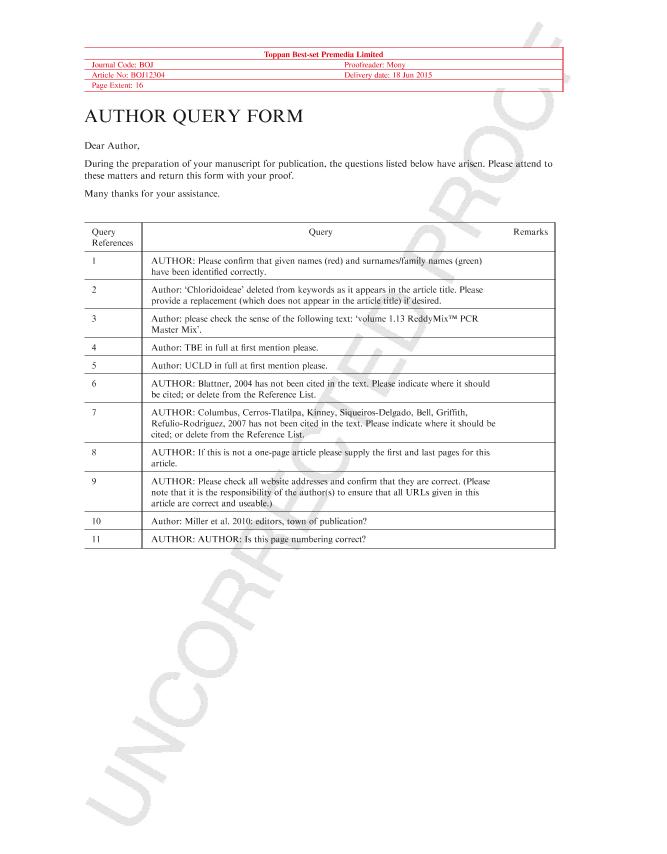Artículo
A tale of North and South America: time and mode of dispersal of the amphitropical genus Munroa (Poaceae, Chloridoideae)
Amarilla, Leonardo ; Chiapella, Jorge Oscar
; Chiapella, Jorge Oscar ; Sosa, Victoria; Moreno, Natalia Cecilia
; Sosa, Victoria; Moreno, Natalia Cecilia ; Anton, Ana Maria Ramona
; Anton, Ana Maria Ramona
 ; Chiapella, Jorge Oscar
; Chiapella, Jorge Oscar ; Sosa, Victoria; Moreno, Natalia Cecilia
; Sosa, Victoria; Moreno, Natalia Cecilia ; Anton, Ana Maria Ramona
; Anton, Ana Maria Ramona
Fecha de publicación:
06/2015
Editorial:
Oxford University Press
Revista:
Botanical Journal of The Linnean Society
ISSN:
0024-4074
Idioma:
Inglés
Tipo de recurso:
Artículo publicado
Clasificación temática:
Resumen
Plant disjunctions have provided some of the most intriguing distribution patterns historically addressed by biogeographers. We evaluated the three hypotheses that have been postulated to explain these patterns [vicariance, stepping-stone dispersal and long-distance dispersal (LDD)] using Munroa, an American genus of grasses with six species and a disjunct distribution between the desert regions of North and South America. Ages of clades, cytology and ancestral characters and areas of distribution were investigated in order to establish relationships among species, determine the time of divergence of the genus and its main lineages and understand further the biogeographic and evolutionary history of this genus. Bayesian inference recovered the North American M. pulchella as sister species to the rest. Molecular dating and ancestral area analyses suggest that Munroa originated in North America in the late Miocene-Pliocene (7.2; 8.2?6.5 Mya). Based on these results we postulate that two dispersal events modeled the current distribution patterns of Munroa; the first from North to South America (7.2; 8.2?6.5 Mya ago) and the second (1.8; 2?0.8 Mya ago) from South to North America. Arid conditions of the late Miocene-Pliocene in the Neogene and Quaternary climatic oscillations in North America and South America were probably advantageous for establishment of populations of Munroa. We did not find any relationship between ploidy and dispersal events and our ancestral character analyses suggest that shifts associated with dispersal and seedling establishment, such as habit, reproductive system, disarticulation of rachilla and shape and texture of the glume, have been important in these species reaching new areas.
Archivos asociados
Licencia
Identificadores
Colecciones
Articulos(IMBIV)
Articulos de INST.MULTIDISCIPL.DE BIOLOGIA VEGETAL (P)
Articulos de INST.MULTIDISCIPL.DE BIOLOGIA VEGETAL (P)
Articulos(SEDE CENTRAL)
Articulos de SEDE CENTRAL
Articulos de SEDE CENTRAL
Citación
Amarilla, Leonardo; Chiapella, Jorge Oscar; Sosa, Victoria; Moreno, Natalia Cecilia; Anton, Ana Maria Ramona; A tale of North and South America: time and mode of dispersal of the amphitropical genus Munroa (Poaceae, Chloridoideae); Oxford University Press; Botanical Journal of The Linnean Society; 179; 1; 6-2015; 110-125
Compartir
Altmétricas



